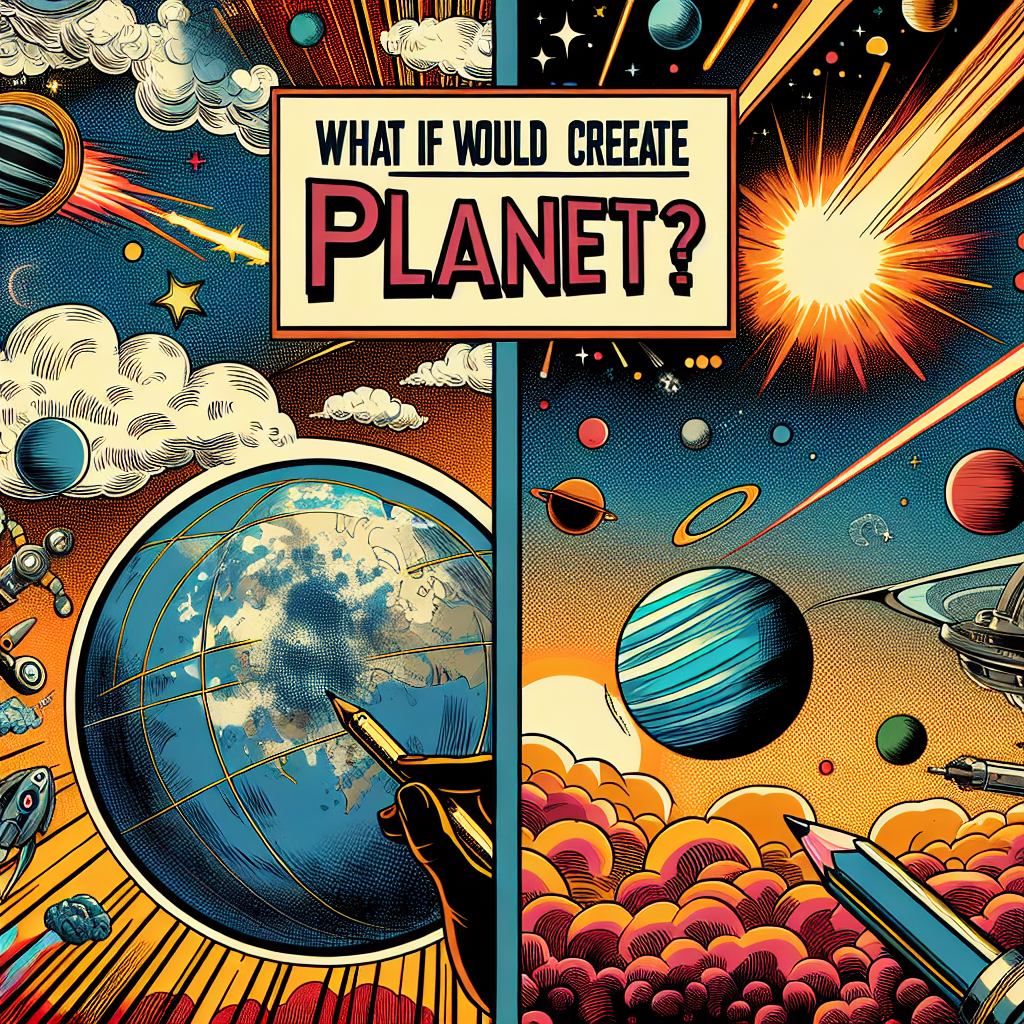To create artificial planets, we'd need to understand what makes a planet a planet in the first place. A planet is essentially a massive ball of rock and gas that orbits a star. So, let's break it down.
The Building Blocks of Planets
Imagine taking a giant pile of Legos and sorting them by color and shape. That's roughly what we'd need to do to create an artificial planet. We'd need a massive amount of raw materials, like rocks, metals, and gases, which would then need to be sorted, processed, and assembled into a coherent structure.
Gravity: The Unsung Hero
Gravity plays a crucial role in shaping our artificial planet. Without it, our planet would be a shapeless, formless mass of debris. Gravity would help us create a spherical shape, which is the most efficient way to contain the internal pressure and heat of a planet.
Size Matters
The size of our artificial planet is crucial. If it's too small, it won't be able to retain an atmosphere, and if it's too large, it'll be a gas giant, which is not what we're going for. We're aiming for a terrestrial planet, like Earth, with a solid surface and a breathable atmosphere.
Atmosphere and Temperature
A planet's atmosphere is like a blanket that wraps around the surface, regulating temperature and protecting the surface from harmful radiation. We'd need to create an atmosphere that's capable of supporting life, with the right mix of gases, pressure, and temperature ranges.
The Importance of Rotation and Orbit
A planet's rotation and orbit are critical to creating a stable climate. If our artificial planet rotates too slowly, one side would perpetually face the sun, while the other side freezes in darkness. And if it orbits too close to its star, it'll be a scorched, uninhabitable world.
Magnetic Fields and Radiation Protection
A planet's magnetic field acts like a force field, protecting the surface from harmful radiation and charged particles from the star and deep space. Without it, life as we know it wouldn't be possible. We'd need to create a powerful magnetic field to shield our artificial planet.
Water, Water, Everywhere
Water is essential for life as we know it. We'd need to ensure that our artificial planet has a reliable source of water, whether it's through atmospheric condensation, comets, or some other mechanism. Water would need to be distributed evenly across the surface, creating oceans, lakes, and rivers.
Geological Activity and Plate Tectonics
Geological activity, like earthquakes and volcanic eruptions, is crucial for shaping a planet's surface and creating diverse landscapes. We'd need to replicate this process, perhaps through artificial mechanisms or by introducing microbes that could contribute to geological processes.
The Role of Microbes
Microorganisms play a vital role in shaping a planet's ecosystem. They'd need to be introduced to our artificial planet to create a self-sustaining ecosystem, capable of recycling nutrients, fixing nitrogen, and regulating the atmosphere.
Challenges and Implications
Creating an artificial planet would be an unprecedented feat of engineering and science. We'd need to overcome massive technological hurdles, like scaling up material production, managing energy resources, and maintaining the planet's habitability over millions of years.
The Ultimate Goal: A Habitable Planet
The ultimate goal of creating an artificial planet would be to create a habitable world, teeming with life, where humans and other organisms could thrive. It would require a deep understanding of planetary science, ecology, and the intricate relationships between living organisms and their environment.
The Possibilities and Implications
If we could create artificial planets, the implications would be profound. We could potentially create new homes for humanity, ensuring the survival of our species. It could also raise profound questions about the ethics of planetary creation, the management of resources, and our place in the universe.

Popular Space Questions
Find answers to the trending space questions being asked by our community on social media.
- How many galaxies are there in the universe?
- How far is Pluto from Earth?
- How many planets are in the Milky Way?
- What would happen if a rogue planet entered our solar system?
- How many planets are in our solar system?
- How big is the Earth?
- What are the planets in order?
- What if we found a way to manipulate gravity?
- What would happen if a pulsar's beam hit Earth?
- How big is the universe?